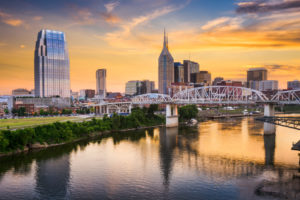 While many homebuyers aspire to acquire their own piece of the provincial pie, a growing share are sticking close to the city, so proclaims a new Urban Land Institute (ULI) report. In fact, the population of urban neighborhoods in many metros is burgeoning as swiftly or almost as swiftly as that of suburban communities, it notes. The research analyzes how this growth has “accompanied the evolution of different types of urban neighborhoods, and how demographic and economic trends have shaped development in these areas,” ULI says.
While many homebuyers aspire to acquire their own piece of the provincial pie, a growing share are sticking close to the city, so proclaims a new Urban Land Institute (ULI) report. In fact, the population of urban neighborhoods in many metros is burgeoning as swiftly or almost as swiftly as that of suburban communities, it notes. The research analyzes how this growth has “accompanied the evolution of different types of urban neighborhoods, and how demographic and economic trends have shaped development in these areas,” ULI says.
This growth, it continues, echoes ongoing consumer demand—most notably among younger cohorts—for living environments near jobs, transit, and urban perks, and that also rank high in walkability.
A major finding: For the first time in decades, population growth in urban neighborhoods in the nations’ 50 biggest metropolitan statistical areas (MSAs) is nearing suburban growth rates. Between 2010 and 2015, urban locations recorded a 3.4 percent growth rate, compared with 3.7 percent for suburban areas. These numbers contrast dramatically to 2000–2015, when the growth rate for urban enclaves was 1 percent, compared with 13 percent for suburbia.
The study categorizes urban neighborhoods as such:
- Economic center–heavy clusters of employment, often historic urban cores, formerly 9-to-5 locales that are becoming 18-hour if not 24-7 neighborhoods.
- Emerging economic center–former single-family or low-density commercial areas evolving into new urban cores.
- Mixed-use district–high-density housing often dotted with upscale retail.
- High-end neighborhood–upscale single-family and multifamily housing, usually in historic areas with easy access to shopping and dining.
- Stable neighborhood–historically working-class neighborhoods with diverse housing types.
- Challenged neighborhood–areas with lower home values and apartment rents and minimal new development, often skirting former industrial and manufacturing districts.
Some key discoveries: Seattle has the largest percentage of residents (13 percent) residing in economic centers, trailed by Washington, D.C., and San Francisco (each at 10 percent). Jacksonville, Florida, boasts the highest population (12 percent) in emerging economic centers, followed by Birmingham, Alabama (11 percent). New York City chalks up the largest number (26 percent) in mixed-use districts, followed by Chicago (23 percent). Seattle registers the heftiest percentage of residents (53 percent) in high-end ’hoods, followed by Austin (43 percent). San Jose tallies the largest number (82 percent) in stable neighborhoods, followed by San Antonio (71 percent). Hartford, Connecticut, records the most residents (68 percent) in challenged neighborhoods, with Detroit tagging just a point behind (67 percent).
While central hubs are enticing homebuyers, a swirl of both urbanities and surbanites in a city is actually a good sign, ULI notes. “Healthy metro areas will continue to feature a wide range of urban and suburban neighborhoods," the report said.

 DSNews The homepage of the servicing industry
DSNews The homepage of the servicing industry









